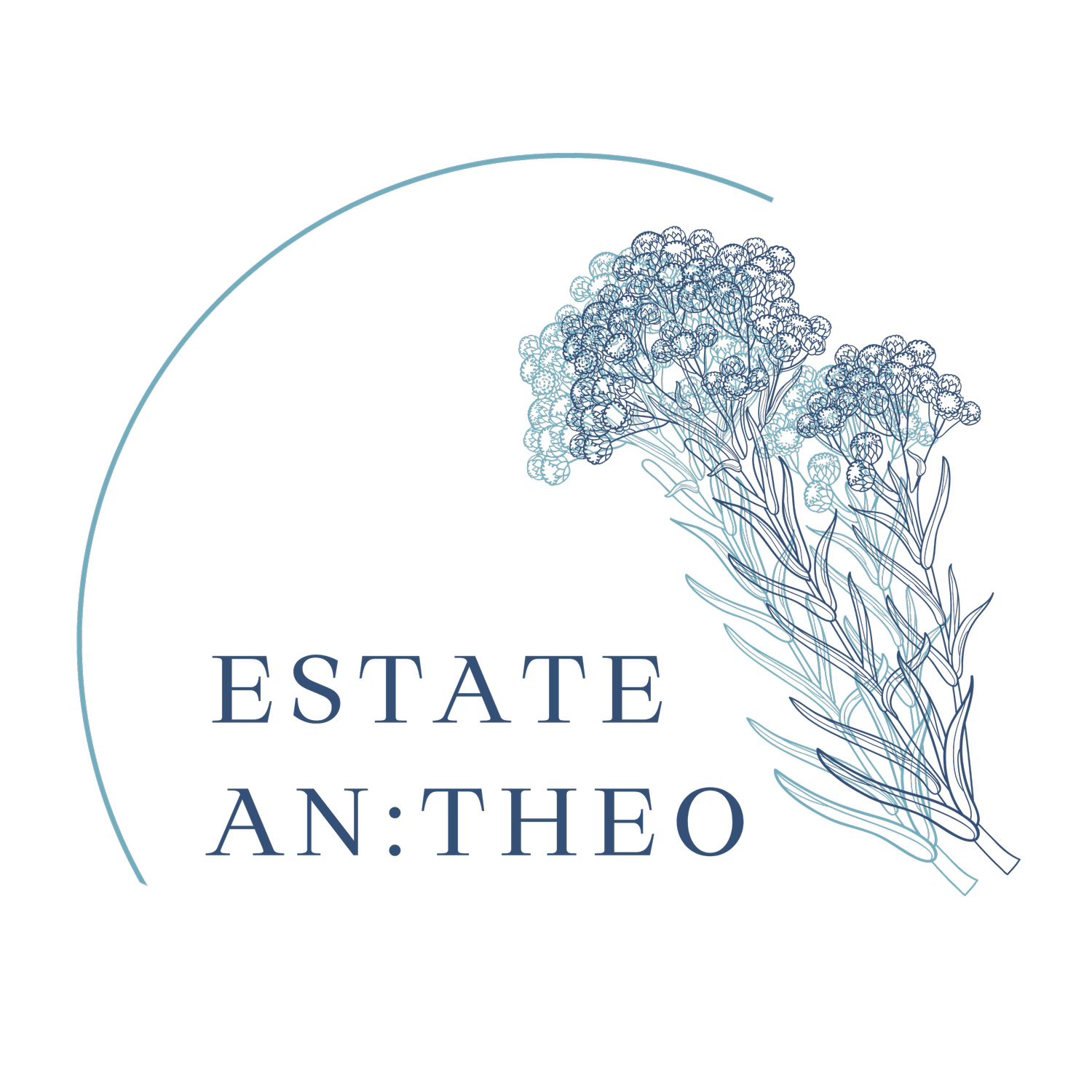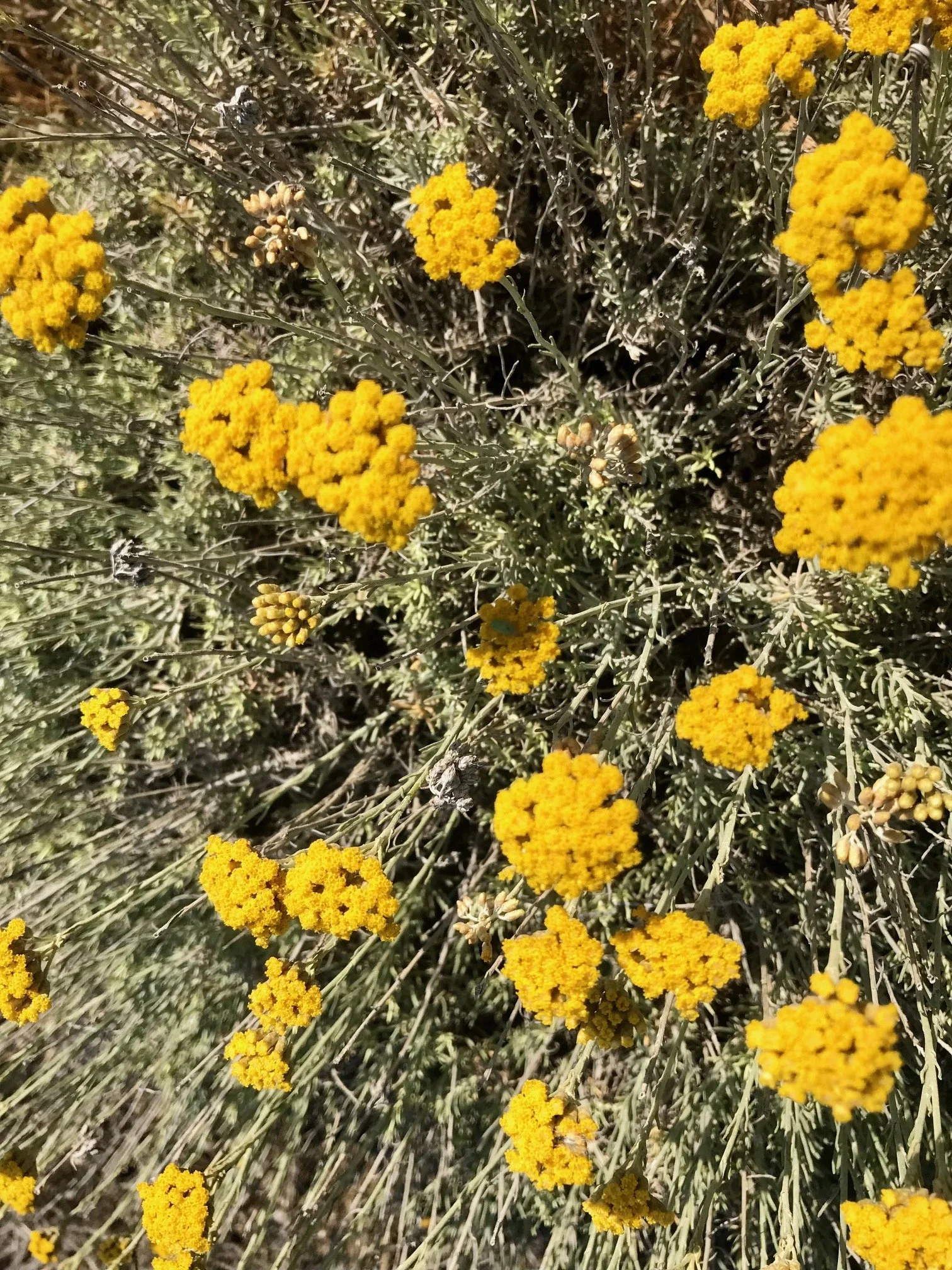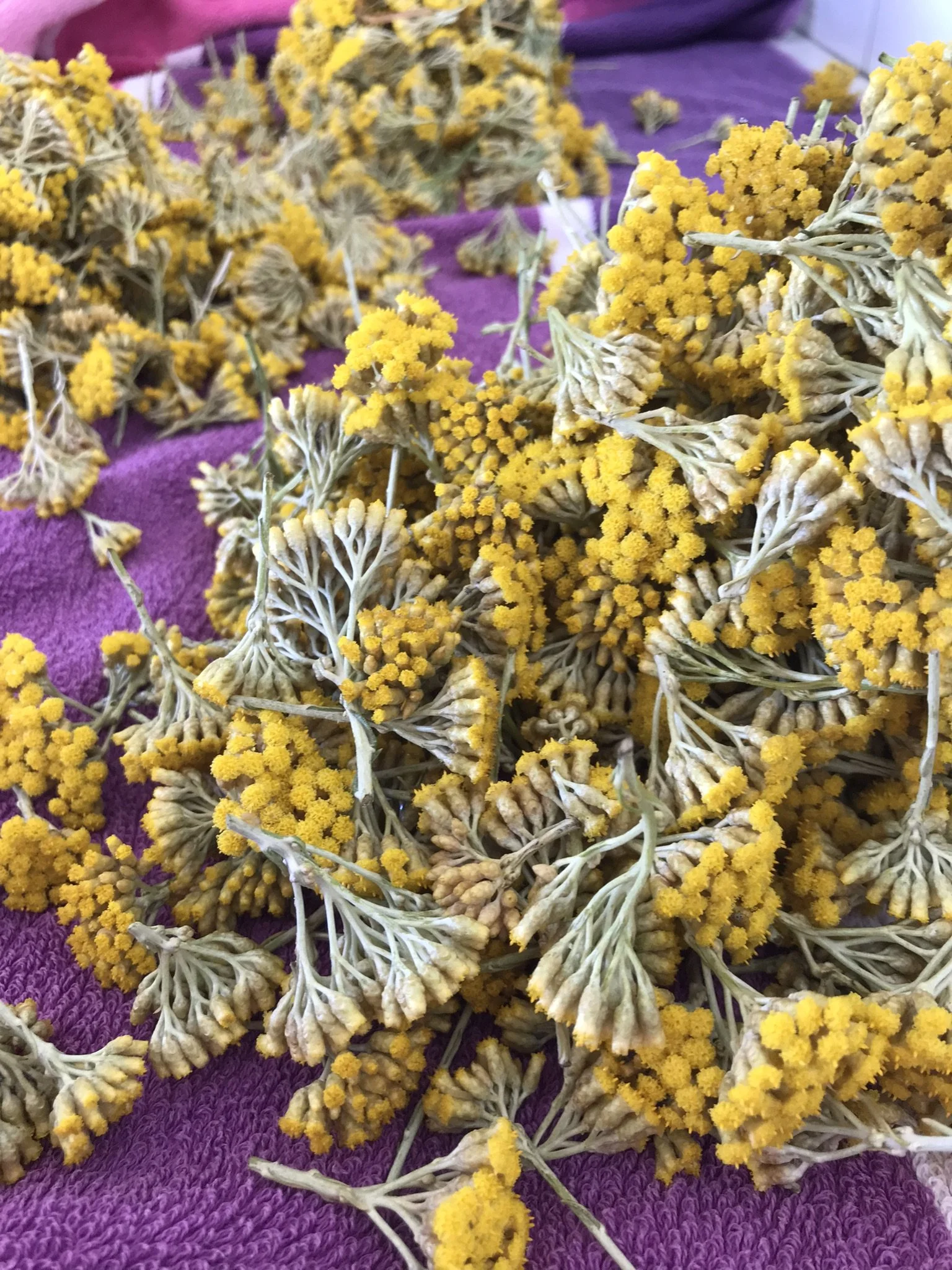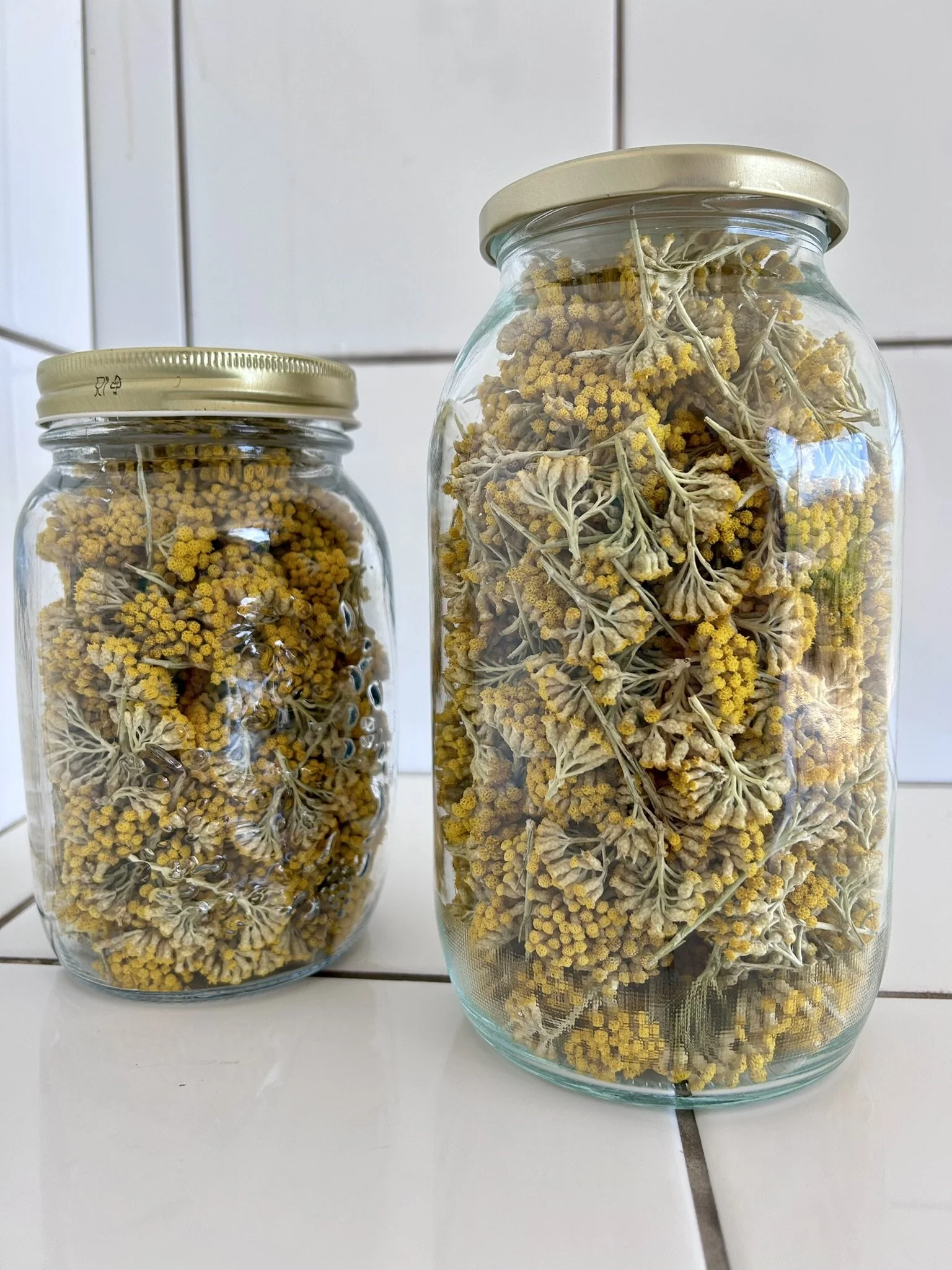Well What’s So Special About Helichrysum?
Ultimately, it’s the flavonoids, esters and sesquiterpenes. What does that even mean? We’ll come to that. Fortunately, there’s much more to Helichrysum than its chemical composition. This herb has a backstory, so let’s begin with legend and history.
Helichrysum Italicum originated in the Mediterranean region of Southern Europe and Northwest Africa where, in its natural state, it grows in scrubland and endures often harsh environmental conditions. It grows especially where the land is difficult to cultivate such as rocky slopes, poor soil or seaside dunes. Today, it is cultivated, primarily in locations that provide the long hours of sun and the mild temperatures the plant requires. Thus, it is cultivated where the plant grows naturally. Wild-harvested plants, however, tend to be more robust and potent, providing greater benefit.
The name Helichrysum is an amalgam of two Greek words; helios, sun, and chrysos, gold. This name acknowledges not only the sun-like shape and color of the flowers but also acknowledges it’s Genus, Helianthus, or sunflower. Blooming from June till August, the compact wild bushes give off a distinct scent of curry. Colloquially it is called Curry Plant for the aroma or Amarantos, meaning ‘does not wilt’. It is also known as Immortelle in France aka Everlasting or Italian Strawflower in English because, even after being picked from the bush, its flowers remain intact and keep their golden color.
Surely, you’ve heard of Helen of Troy and Paris, her lover?
Legend has it that when they fled from Sparta to Troy, they stopped on the island of Kythira. Helen was jealous of Aphrodite (Venus) who lived on the island. Helen asked Paris to tell her she was the most beautiful, more beautiful even than Aphrodite. However, you don’t mess with Aphrodite, who jealously guarded her beauty. Caught in a bind, Paris pointed to the Helichrysum at Helen’s feet. He compared Helen to the flower saying Helen had the same golden hair, the same slender body and the same velvet skin as its blossom. Your beauty will last forever, he told her, just as the beauty of this flower is immortal. Well done, Paris. That was a narrow escape.
Napoleon, too, had a great fondness for Helichrysum. By its curry scent, carried on the wind from Corsica in Southern France across the sea, Napoleon reportedly could locate his home island before it could be seen. When Napoleon later was sent into exile on the remote island of St. Helena in the South Atlantic, two supporters in London, Lady Elizabeth and Lord Henry Holland, sent him a framed and inscribed wreath of Corsican Helichrysum meant to ease his time in exile. This wreath was sold at auction in May 2024 for Euros 12,000.
The idea for Helichrysum wreaths began with Ancient Greeks who adorned their temples and the statues of their gods with golden Helichrysum wreaths. This custom continues today on islands such as Amorgos and Kythera where spring wreaths are hung on doors of homes and shops.
Helichrysum is more than just another pretty face.
It has been used in folk and traditional medicine for centuries, even as far back in time as 400BCE. Hippocrates, the spiritual “Father of Modern Medicine” used a salve of Helichrysum to treat burns. Its uses grew to include the relief of pain and muscle spasms, ease of respiratory distress, to dull toothaches, cure colds, laryngitis, allergies, insomnia, alopecia, herpes, skin diseases. Mixed with wine it is considered therapeutic for bites. As a tea it was used to treat stomach aches, digestive disorders and headaches.
While many of its uses may have been effective due to the placebo effect, many modern, scientific, in vitro assays prove Helichrysum’s multiple biological activities and quantifiable benefits.
Testing is ongoing but, so far, we know for certain that Helichrysum has antiviral, antimicrobial, antibacterial and antifungal properties. Many of its chemical properties protect the plant from environmental effects that would otherwise cause oxidative damage. This benefit is passed on when used in skincare formulations or tea.
Helichrysum essential oil has anti-inflammatory and tranquilizing effects due to its composition of esters (typically 40%), 30% sesquiterpenes, which bring oxygen into cells, and diketones (about 10%) which stimulate cellular function. Furthermore, it is known to have antiproliferative effects, that is, it tends to suppress growth of malignant cells into surrounding tissues. It helps with eczema, acne, a range of skin irritations, scars, dermatitis, bruises and itchiness. It can dissolve old hematomas (contusions or black and blue marks). It is nontoxic and generally does not cause sensitivities. And if that isn’t enough, it has a relaxing, calming effect, thus easing stress.
Helichrysum’s anti-aging properties also have been tested extensively.
Quick Anti-aging Background: Elastin and collagen are the main components of connective tissue, and are responsible for resistance and elasticity of the skin. Elastin and collagen are routinely damaged and degraded by free oxygen radicals that build up in cells either from normal cellular metabolism or from external sources such as pollution, smoke, radiation, medication, etc. This damage produces elastase and collagenase (enzymes) that break down the beneficial elastin and collage (proteins), resulting in wrinkle formation accompanied by skin aging.
You’ll never guess! Yes, Helichrysum measurably inhibits the generation of the harmful undesirables, elastase and collagenase, thereby supporting elasticity in human skin. Such help from a plant! It stuns the mind.
Wait, there’s more! In vivo tests in both humans and animals highlight Helichrysum’s photoprotective activity that assists organisms in coping with molecular damage caused by sunlight. The natural flavonoids in Helichrysum offer photoprotection because they filter out UV rays. It is well documented that UV light and exposure to sunlight age skin more quickly than it would naturally age. Nevertheless, don’t skip the sunblock!
Helichrysum is a powerful ally to human skin health, a proven, natural moisturizer and beauty aid that makes skin smoother, brighter, younger-looking and more toned.
Given Helichrysum’s ability to aid, protect, soothe and regenerate skin, it is clear why it is a key active ingredient in natural brands such as Estate An:Theo Skin Healing Balm. Add Helichrysum to your arsenal of skin protection along with drinking lots of water, eating fruits and vegetables, staying out of the sun during the hottest part of the day, not smoking, getting plenty of sleep and using a full-spectrum sunblock when outdoors. Since our skin is our largest and most exposed organ, tending to skin health is an ongoing part of everyone’s overall health and wellness.
https://santa-bianca.it/en/the-essential-properties-of-helichrysum/
https://www.herbalgram.org/resources/herbmedpro/herb-list/helichrysum-italicum?subCat=Patents
https://japsonline.com/abstract.php?article_id=1063&sts=2
https://pubmed.ncbi.nlm.nih.gov/24239849/
https://www.sciencedirect.com/topics/agricultural-and-biological-sciences/helichrysum-italicum





